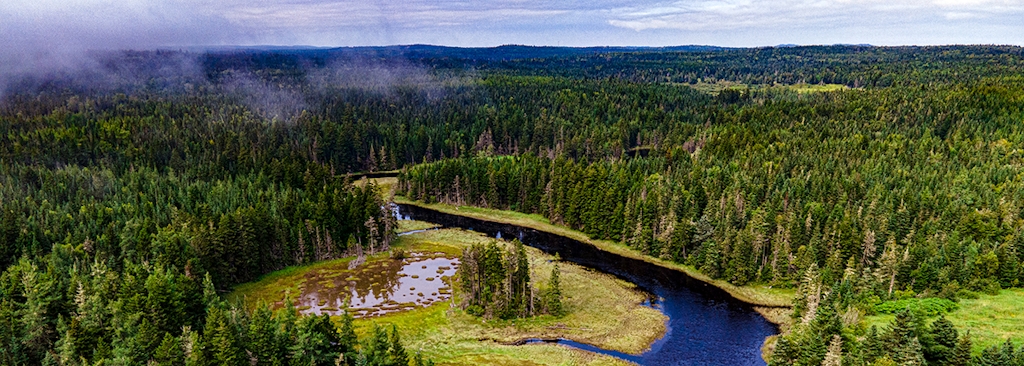The Highstead Foundation’s new report, New England’s Climate Imperative: Our Forests as a Natural Climate Solution, highlights New England forests’ untapped potential in the fight against climate change and indicates they could sequester at least 20 percent of the region’s current emissions and, if all New England states meet their emissions-reduction goals, up to 97 percent of remaining emissions in 30 years. These findings are consistent with other analyses performed by report coauthors from New England Forestry Foundation (NEFF).
The report models the impact of five integrated pathways—avoided deforestation, wildland reserves, improved forest management, mass timber construction, and urban and suburban forests—and of these approaches, improved forest management has by far the greatest potential to mitigate climate change.
“It is essential to address all five pathways together in a systemic approach, both to make the greatest possible carbon-mitigation gains and to preserve everything that makes forests a vital part of life in New England,” said Bob Perschel, NEFF Executive Director. “Within this context, however, improving forestry practices plays a key role.”
Highstead estimates New England could store 203 million tons (184 million metric tons) of CO2e over 30 years if improved forest management was implemented on half of the region’s understocked working forestland, and NEFF estimates New England could store 598 million tons (542 million metric tons) of CO2e in the same timeframe if its Exemplary Forestry standards were implemented across all understocked counties in the region.
At a per-acre level, NEFF and Highstead’s results are similar, but Highstead’s total is lower because the organization chose to anticipate a 50 percent adoption rate.
“Highstead’s analysis is in line with the modeling work NEFF has been conducting for several years, in spite of using different methods and different targets,” said Alec Giffen, NEFF’s Senior Forest Science and Policy Fellow. “Instead of setting a target for implementing improved forest management on a portion of the landscape, we reported the total potential across all understocked counties in New England to emphasize the whole opportunity that’s available if the region chooses to make natural climate solutions a priority.”
The Highstead report is well aligned with multiple studies that indicate the potential of improving forest management—all of which place the potential carbon benefit within the several hundred million-ton range. These studies include the research underpinning NEFF’s 30 Percent Solution, which will be documented in a forthcoming report and a research paper that has been submitted for publication in a peer-reviewed journal. By combining the expanded use of NEFF’s Exemplary Forestry standards with three other forest-based climate solutions, the 30 Percent Solution can provide nearly one-third of the CO2e emissions-reductions New England needs in the next 30 years.
The Highstead study and NEFF’s parallel analysis are all highly relevant to the underlying case for the recent $30 million Partnerships for Climate-Smart Commodities grant NEFF received from the USDA, which will allow NEFF to immediately begin to help forest landowners implement climate-aligned forestry improvements. Additional funding over a 30-year time frame is necessary to capture the full potential of New England’s managed forests and bring these efforts to scale across New England’s 32 million acres of forestland.
“These numbers point to what is possible over the next 30 years through tapping our region’s natural climate solutions,” said NEFF Deputy Director and Climate Fellow Andrea Colnes. “The Climate-Smart Commodities award from the USDA will put New England at the forefront of defining and delivering forest-based climate solutions. Building on this pilot investment, NEFF will work with partners to develop new policy approaches and additional funding for 30 years. Improving forestry and storing carbon is one of the most effective and cost-efficient ways we have of mitigating climate change.”
To read the full report and for more information about Highstead’s research, visit highstead.net/library/forests-as-a-natural-climate-solution.
Top photo: NEFF’s Holmes Stream Community Forest, which serves as a demonstration site for Exemplary Forestry, photo by Michael Perlman


